Award-winning cake artist hand-paints a three-tier festive cake exclusively for mid-day, right in our Bandra office
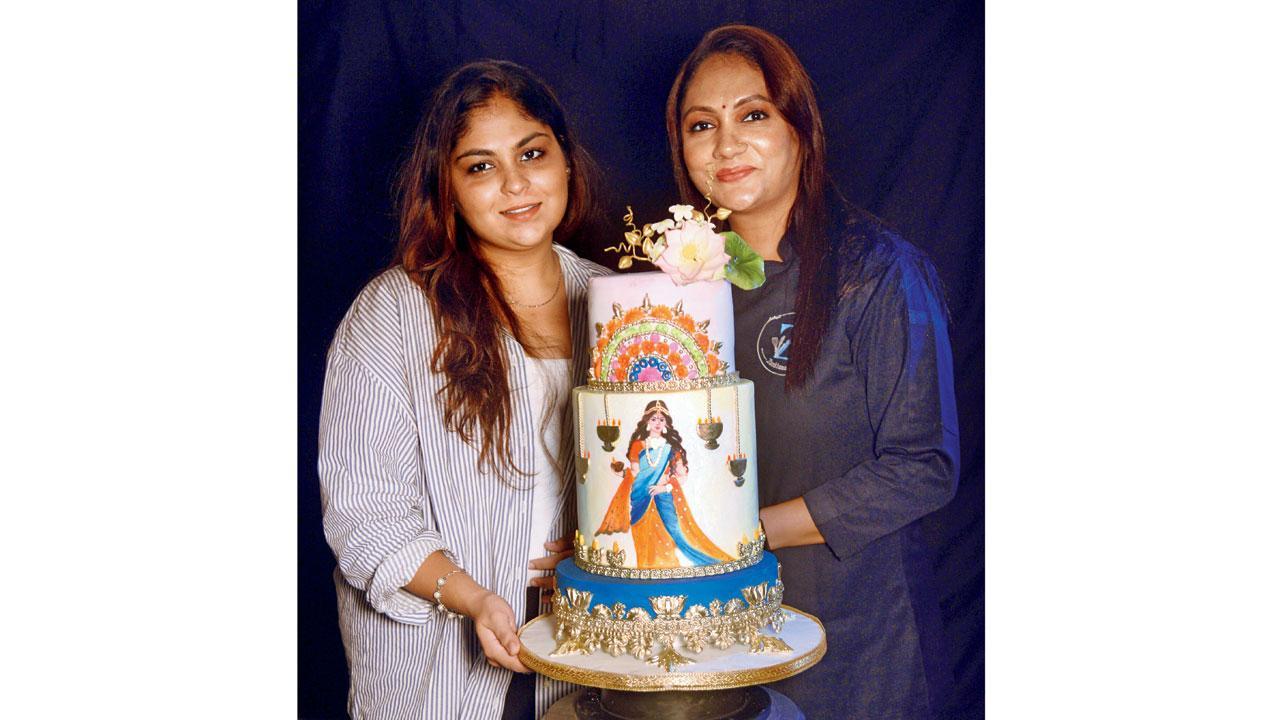
Zankhana Makwana, seen here with daughter Vrushali, says the challenge of crafting a festive cake is working against the city’s humid weather. Pics/Pradeep Dhivar
Last month, Lower Parel-based cake artist Zankhana Makwana was in the limelight. Her India-themed cake—a five-foot, 11-layer creation that featured the Taj Mahal, brightly-coloured peacocks, elephants flanking a golden temple, and lotus sugar flowers—was the showstopper at Cakeology 2023. The cake fest shines a spotlight on the creative confections of home bakers and chefs. A baker by passion and not just profession, Makwana also holds the title of India’s Top 10 Cake Master of the year 2023, awarded by the Cakemaster Magazine.
ADVERTISEMENT
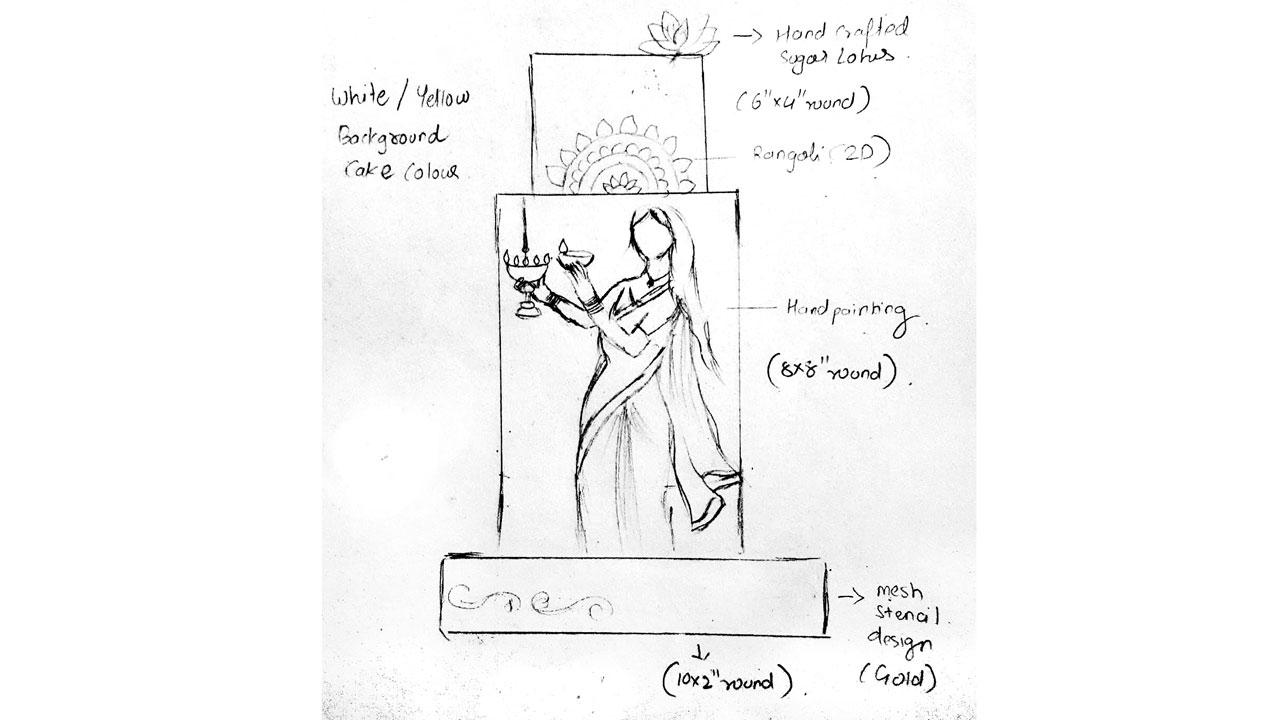
Sketch of the handpainted cake that manifested into icing reality
Sunday mid-day invited Makwana to our suburban office to reveal the secret to crafting such creative cakes that take inspiration from home. “The secret ingredient is passion,” she tells us as she painstakingly works on the intricate design of the Diwali-themed cake, almost like a mehendi or rangoli artist. Makwana, who suffers from cervical issues in her wrist, doesn’t let her condition come in the way of her art. She bends at the waist for hours, supporting her right wrist with the left one to fill in the details. Making a cake with two or more layers takes hours of work, starting with a sketch conceptualising the design and its detailed elements. The base, a chocolate sponge, has been prepared and kept in the fridge overnight. Then comes the layer of fondant, which requires precise measurements to appear seamless.
Makwana says that the fondant, which is a sugar dough, can make or break the taste of a cake. “Think of the commercial cakes that you buy,” she explains. “We usually remove the fondant while eating those because they’re hard and don’t taste like anything.” The firmness of the fondant depends on how long it’s been exposed to air, which is why commercial cakes, prepared weeks in advance, usually taste unpalatable. “Fondant, at its best, should taste moist like bubblegum,” she says. “Not dry.”
What may seem surprising, but is a deal-breaker, is the temperature you work in. Contrary to popular belief, fondant cakes should not be kept in the fridge if you want them to be moist and soft from the inside as well as the outside. Ideally, they have to be stored in a 24/7 air-conditioned room. While she worked on our confectionary creation, she was particular that the air conditioner was set between 16 to 18 degrees centigrade. That’s how Makwana ensures her creations are firm but malleable.
While decorating the cake by crafting fondant seems exciting, the tedious process reveals itself in the hours and concentration required to first shape out each element with a mould, stick it to the cake, and then paint individually with edible oil-based colours. At this juncture, temperature is crucial, as Mumbai’s weather, Makwana laments, is not conducive to surface art. Apart from baking the base layers individually, shaping them and stacking them on top of each other, painting each decorative element takes the most time. Makwana has dabbled in many forms of art, including ceramics painting, glass painting, and sketching, before making cakes her canvas in 2009.
It requires patience and steady hands. Like any painting, it starts with a rough sketch of the intended design. Special edible markers and pigment pens are used to draw on the fondant. But first, a wash of colour in layers as with watercolours on paper. The challenge is spreading the paint smoothly and evenly, but quickly, because paint dries up faster on fondant than it does on paper. And you can’t use water—it will moisten the fondant. The paints have to be heated up with a lighter to melt and spread them over the surface.
The diyas lining the cake are painted with gold dust powder mixed with an alcohol compound called Evapourex. When the alcohol evaporates, the powder sticks to the fondant. “I used a flower mould to cut out the diyas because I couldn’t find a diya mould,” the cake artist explains.
The cherry on the cake, pun intended, is the bouquet on top. These realistic-looking lotuses and twines are made of sugar paste and dried overnight before being painted with petal powder. Each takes roughly three to four days to finish. They’re edible as well, except for the twine, which is covered in edible paper before being stuck into the cake.
How to craft a handpainted Diwali cake
Pre-preparation stage
Bake a round vanilla or chocolate sponge cake, and layer it with ganache. This will form the base and has to be refrigerated before being frosted the next day
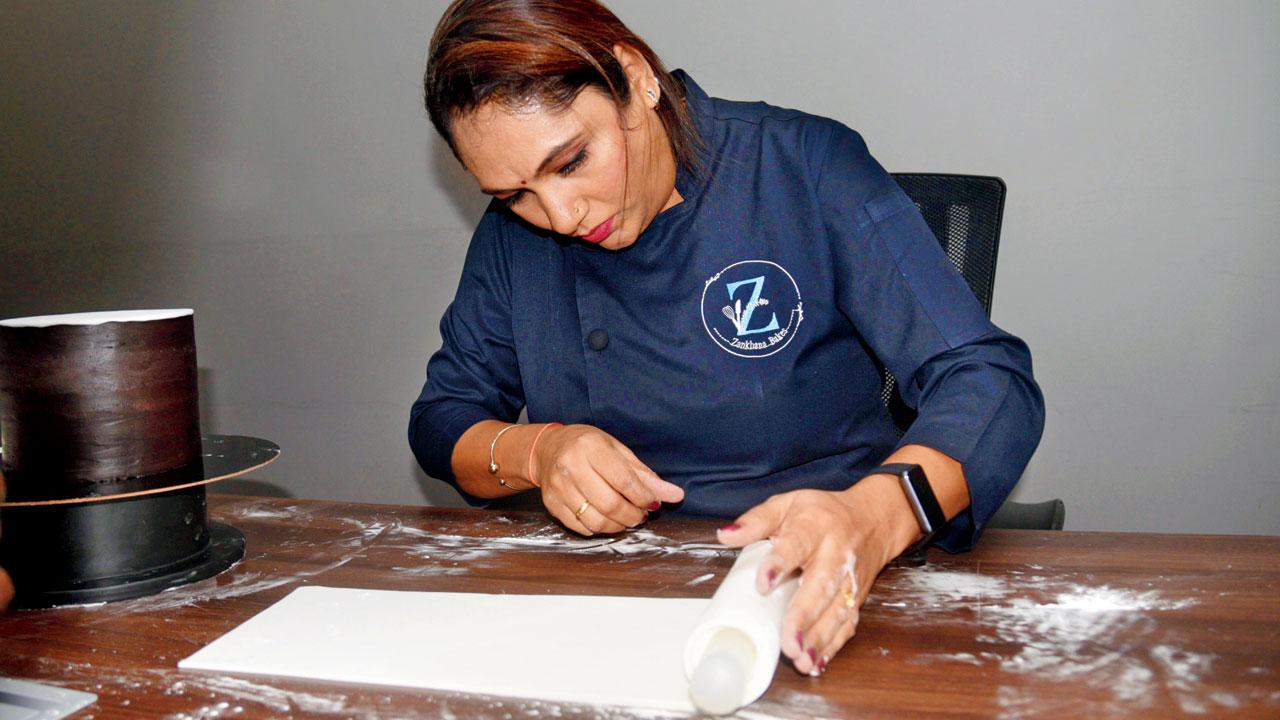
Step 1
The fondant is prepared from sugar, water, butter and corn syrup, and layered thinly over the cake. A thick layer will weigh the cake down and
harden easily
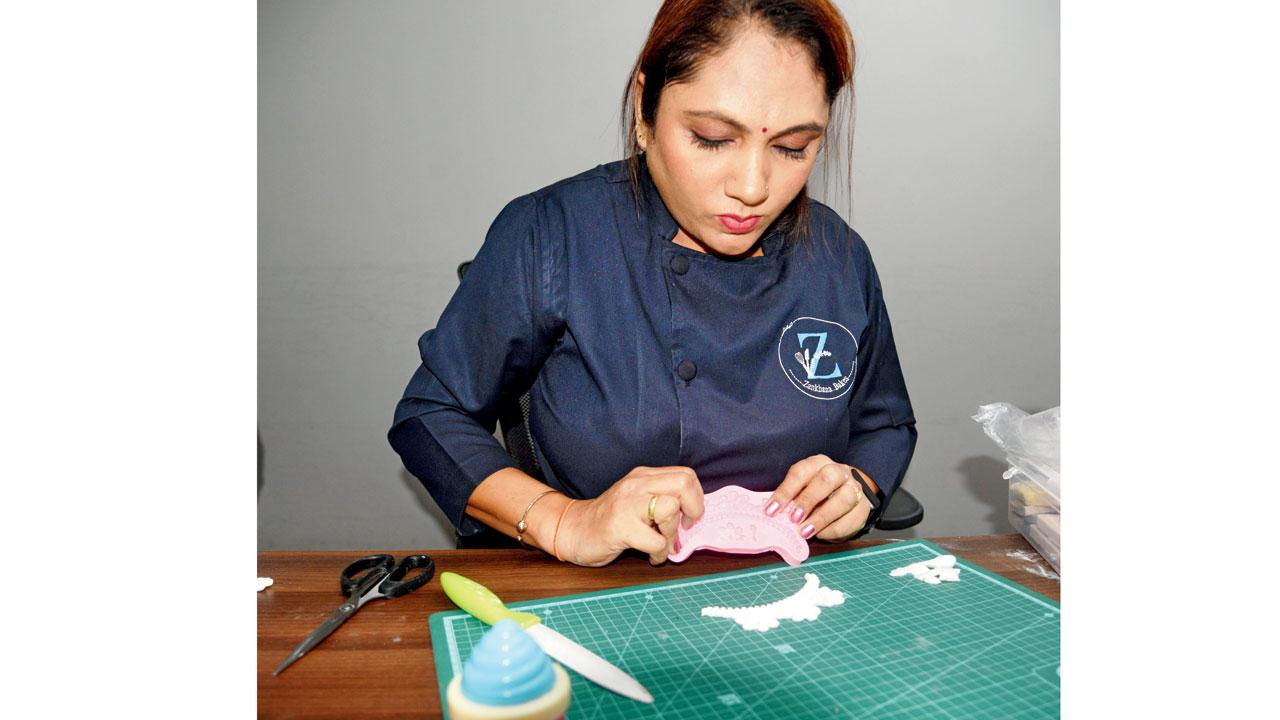
Step 2
Individual moulds are used to shape each element. Generic shapes can lead to innovative designs, such as turning a leaf into the flame of a diya
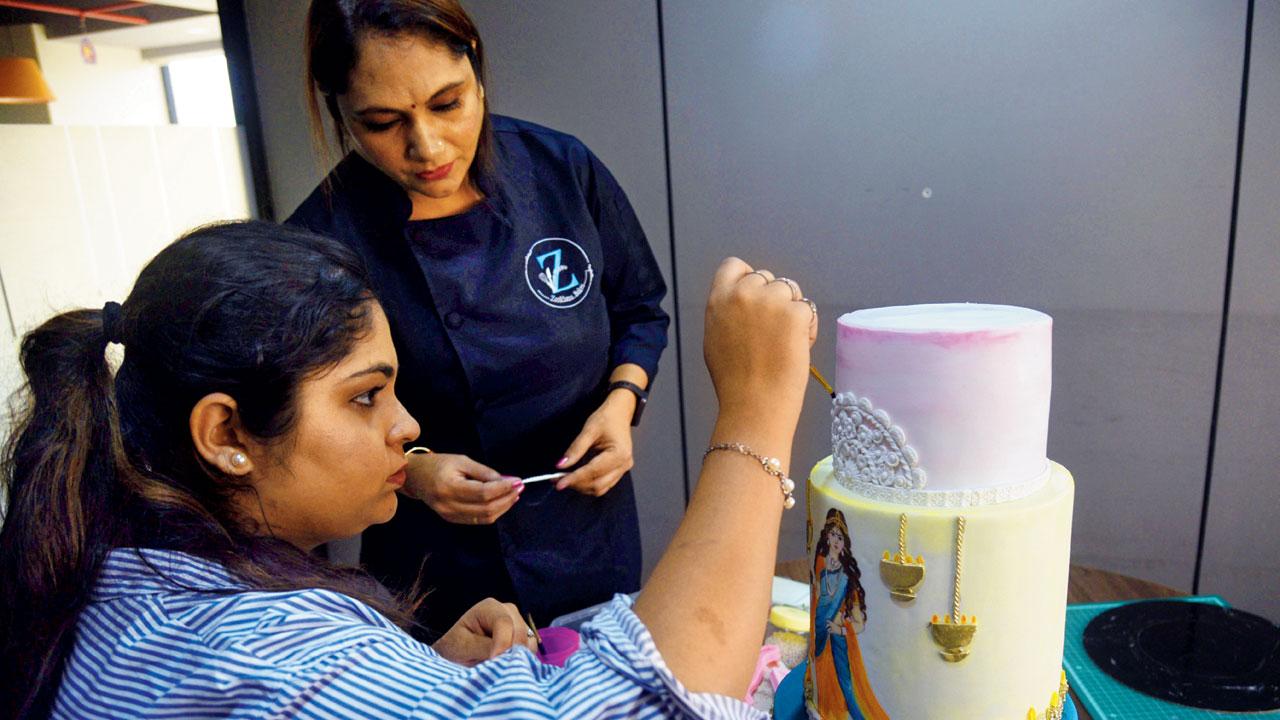
Step 3
Each design need to be stuck to the cake with edible glue before they can be painted with edible colours and sparkle
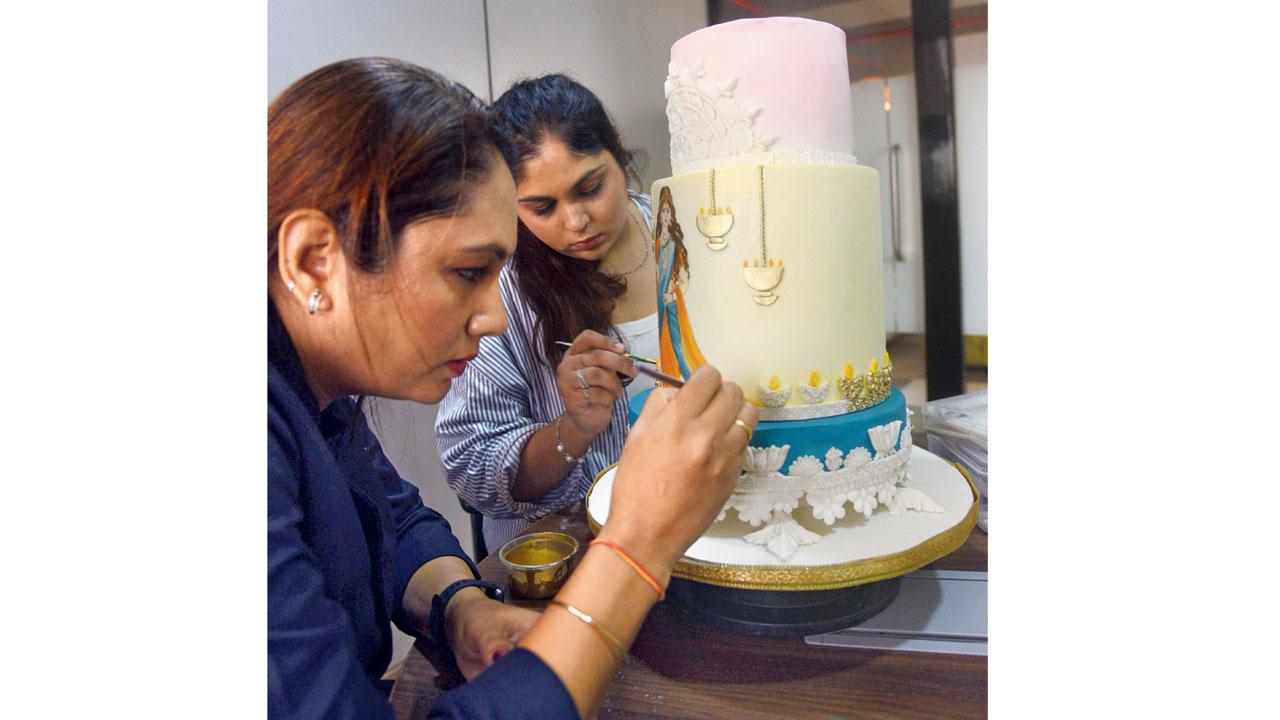
Step 4
The final stage includes hand-painting the creation. First comes a sketch using edible pencil leads, then a light wash of colour, and finally the finer details, just as you would paint on a canvas
 Subscribe today by clicking the link and stay updated with the latest news!" Click here!
Subscribe today by clicking the link and stay updated with the latest news!" Click here!







